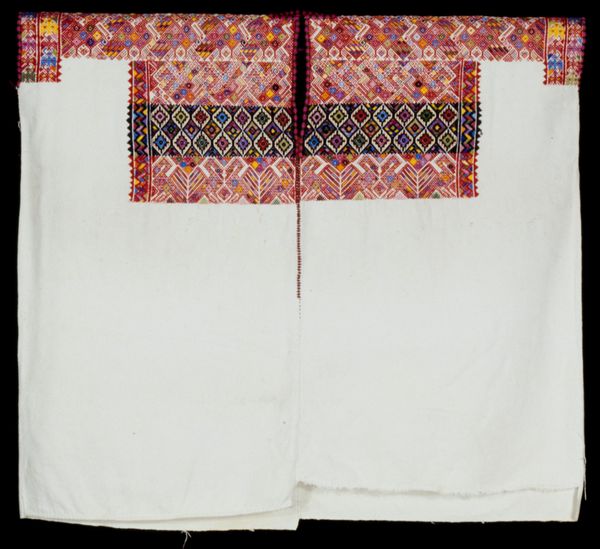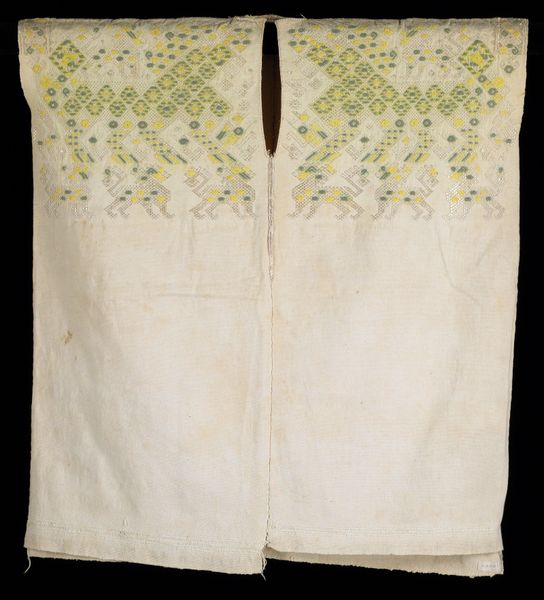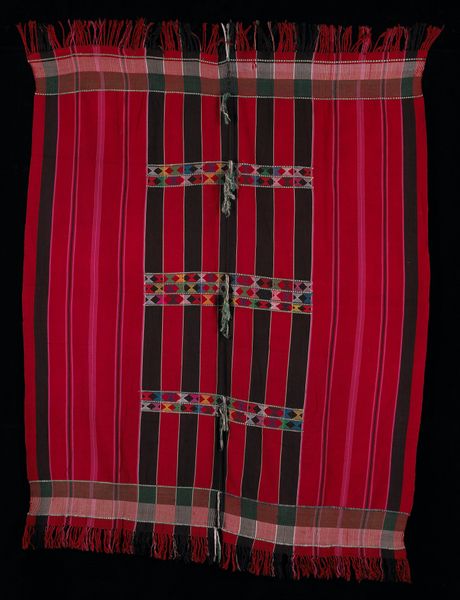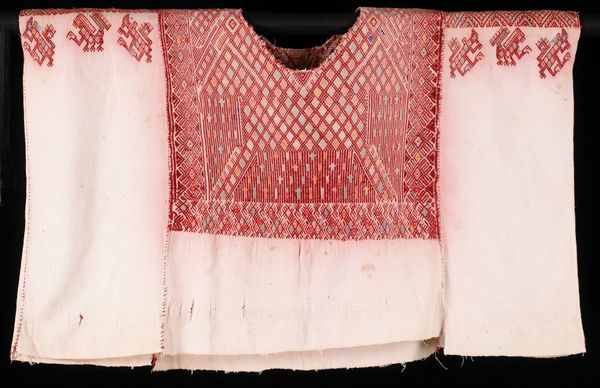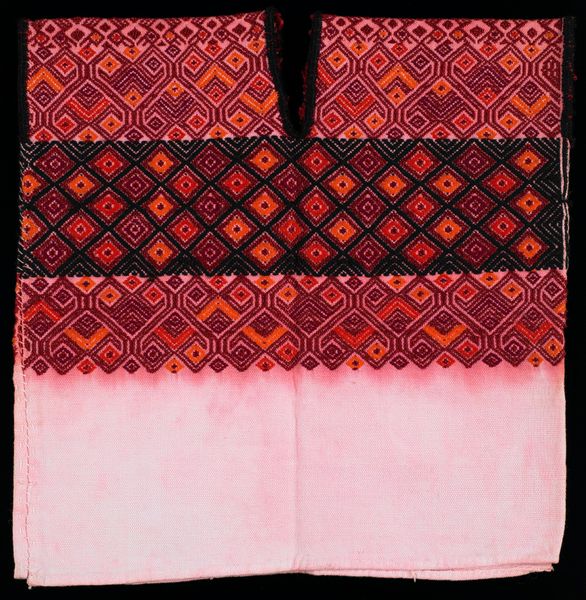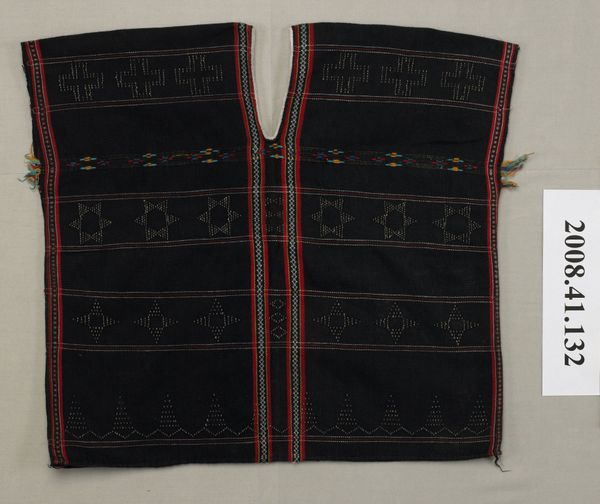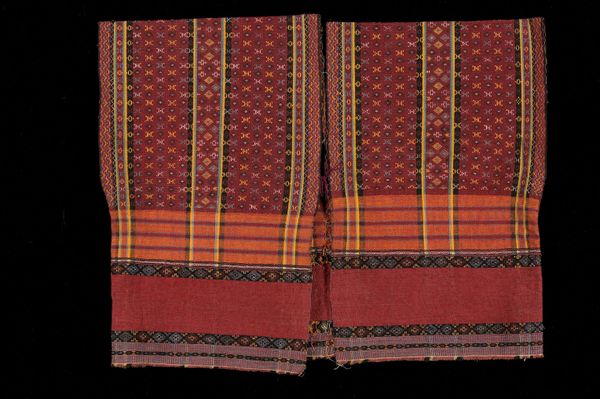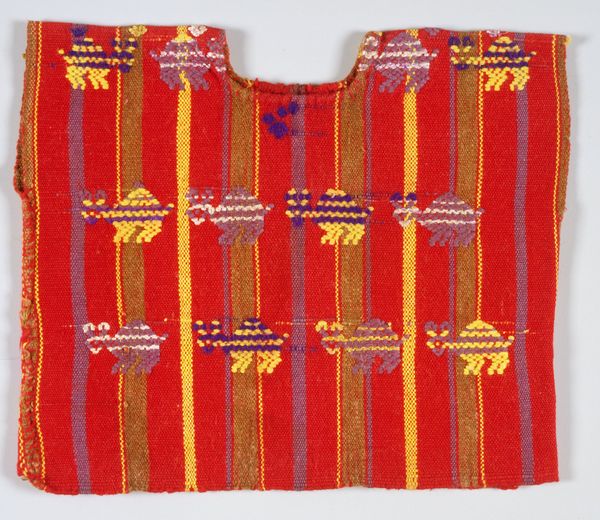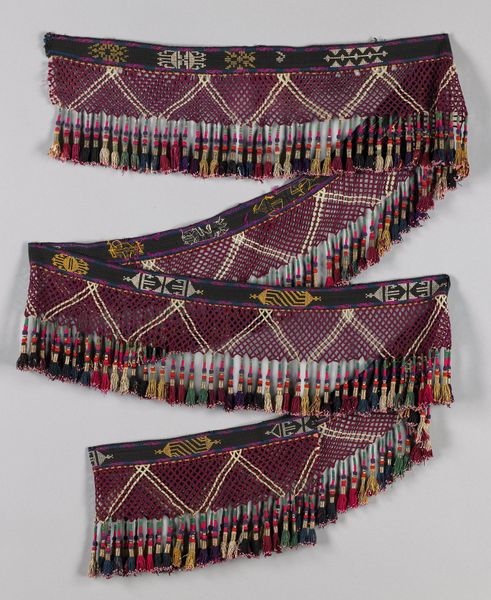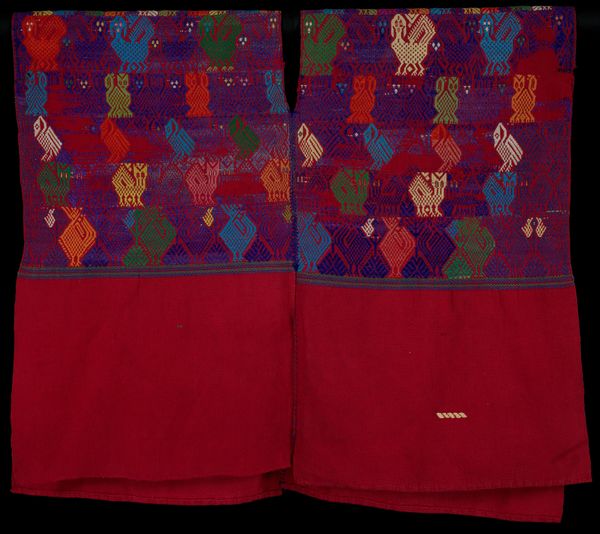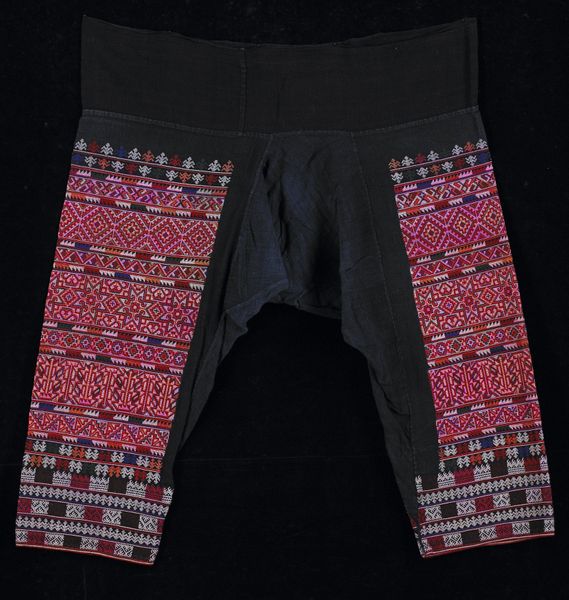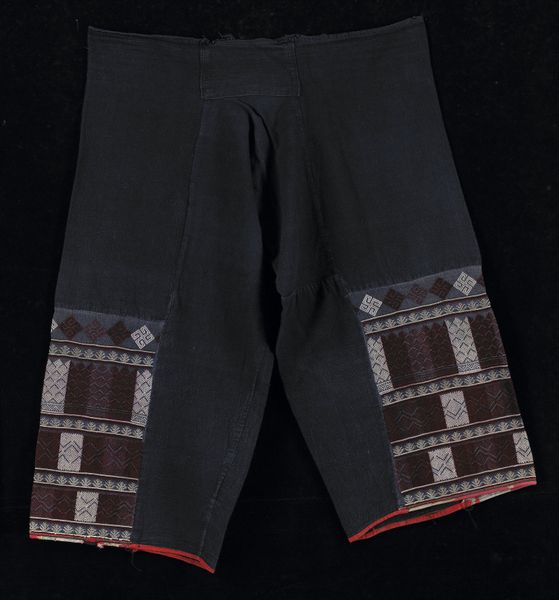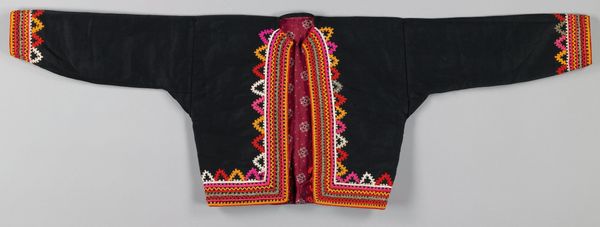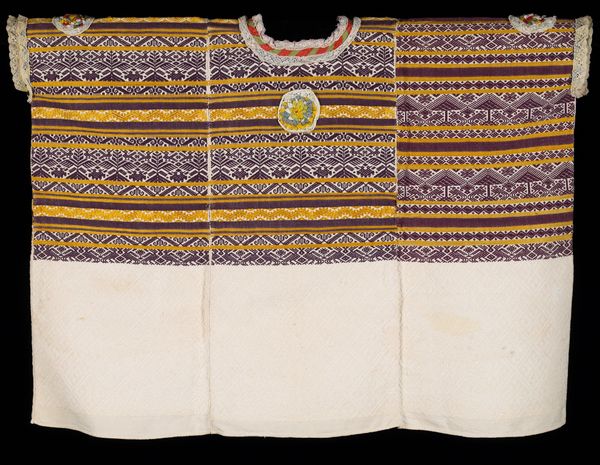
fibre-art, weaving, textile, cotton
#
fibre-art
#
weaving
#
textile
#
cotton
#
indigenous-americas
Dimensions: 23 x 42 in. (58.42 x 106.68 cm)
Copyright: Public Domain
Curator: Immediately, I’m drawn to the precision. There’s something quite serene and stately about the parade of figures, though they feel more stylized than lifelike. Editor: We’re looking at a woman's blouse, a "Huipil," believed to be from around 1930. It's a striking textile, combining cotton and silk. It resides here at the Minneapolis Institute of Art, providing a window into Mayan textile traditions. Curator: Textile traditions are interesting, aren’t they? When one considers a blouse like this one, do you immediately think of something crafted with devotion, reflecting cultural identity, and also something…very personal to the wearer? It's almost talismanic. Editor: Absolutely. Clothing as a cultural statement, as armor even. The huipil is so much more than just a garment; it carries encoded social, geographic, and even spiritual meaning. Those repeated figures, perhaps birds or deities, are definitely not accidental. They reflect deep cosmological beliefs woven – literally – into daily life. I'm curious about the process. Was the wearer also the artist? The maker? What kind of space did the textile originate in, within the domestic or in the public realm? Curator: Considering indigenous practices, I would suggest those geometric forms may even contain abstracted, archetypal information, understood by its intended wearers at the time and now open for wider considerations, based on historical context. It creates a cultural memory that is quite interesting to delve into. Do you find its creation is an example of feminine art? Editor: I resist the impulse to designate such powerful cultural objects through the binary lens of feminine and masculine. What I consider imperative is analyzing who held the power in this visual vocabulary. Did the huipil serve to reinforce existing hierarchies, or could it operate as a form of quiet subversion or resistance? I wonder about the specific community it comes from. What can we learn from their creation myths, or social structures to de-code? What part do oral histories play in the telling? Curator: Perhaps we may never be certain of the specifics, but the questions it prompts about identity, agency, and enduring traditions are certainly significant. I consider this garment to be an important symbol of enduring artistry and spiritual vision. Editor: It certainly stands as testament to the ingenuity and powerful narratives interwoven into the fabric of culture. It’s a tangible expression of identity—literally worn on one's sleeve… or rather, across the chest.
Comments
No comments
Be the first to comment and join the conversation on the ultimate creative platform.
